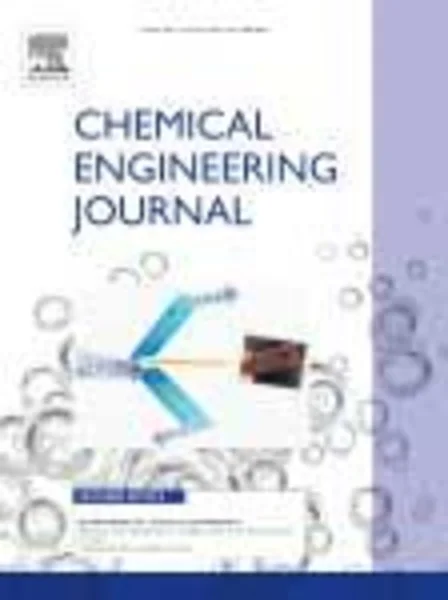-
membrane gas separations and post-combustion carbon dioxide capture: parametric sensitivity and process integration strategies
جزئیات بیشتر مقاله- تاریخ ارائه: 1392/01/01
- تاریخ انتشار در تی پی بین: 1392/01/01
- تعداد بازدید: 556
- تعداد پرسش و پاسخ ها: 0
- شماره تماس دبیرخانه رویداد: -
reducing the energy requirement is the primary challenge for post-combustion co2 capture technologies. growing interest is being shown in membrane processes as an alternative to the reference technologies (such as gas–liquid absorption in amine absorption). however, these membrane processes remain energy intensive when the recommended co2 purity and capture ratio (both typically at 90%) are imposed. in this study, a systematic parametric analysis of the energy requirement of a single stage membrane gas separation module has been performed. different inlet co2 contents and membrane selectivity performances have been compared. in contrast to previous studies, the capture ratio and co2 purity constraints have been relaxed below the 90% target in order to possibly identify the most appropriate role and place of membrane processes in a carbon capture and storage (ccs) framework. it is shown that diluted co2 feed streams (such as natural gas turbine flue gases) systematically require excessive energy for co2 capture. however, single stage membrane units offer interesting possibilities with a very low energy requirement when used as a pre-concentration step for a moderate inlet co2 content (15–30%) or as a final step for concentrated streams (50% inlet co2 content or more). finally, guidelines for improved integration strategies of membrane units in different carbon capture scenarios, with a particular emphasis on hybrid processes, are proposed.
مقالات جدیدترین رویدادها
-
استفاده از تحلیل اهمیت-عملکرد در ارائه الگوی مدیریت خلاقیت سازمانی و ارائه راهکار جهت بهبود
-
بررسی تاثیر ارزش وجوه نقد مازاد بر ساختار سرمایه شرکت های پذیرفته شده در بورس اوراق بهادار تهران
-
بررسی تأثیر سطح افشای ریسک بر قرارداد بدهی شرکت های پذیرفته شده در بورس اوراق بهادار تهران
-
بررسی تأثیر رتبه بندی اعتباری مبتنی بر مدل امتیاز بازار نوظهور بر نقد شوندگی سهام با تأکید بر خصوصی سازی شرکت ها
-
تأثیر آمیخته بازاریابی پوشاک ایرانی بر تصویر ذهنی مشتری پوشاک ایرانی (هاکوپیان)
-
تحلیل فضایی زیر ساخت های گردشگری استان گیلان با رویکرد توسعه پایدار
-
(بررسی پایداری در معماری میدان نقش جهان اصفهان)
-
مدیریت برنامه ریزی و توسعه سواحل مکران با تاکید بر راهکارهای کاهش مخاطرات ناشی از سونامی
-
رعایت اصل حریم در طراحی مسکن معاصر
-
a comparison between standing wave pattern in front of vetical breakwater with horizontal and sloped-bed
مقالات جدیدترین ژورنال ها
-
مدیریت و بررسی افسردگی دانش آموزان دختر مقطع متوسطه دوم در دروان کرونا در شهرستان دزفول
-
مدیریت و بررسی خرد سیاسی در اندیشه ی فردوسی در ادب ایران
-
واکاوی و مدیریت توصیفی قلمدان(جاکلیدی)ضریح در موزه آستان قدس رضوی
-
بررسی تاثیر خلاقیت، دانش و انگیزه کارکنان بر پیشنهادات نوآورانه کارکنان ( مورد مطالعه: هتل های 3 و 4 ستاره استان کرمان)
-
بررسی تاثیر کیفیت سیستم های اطلاعاتی بر تصمیم گیری موفق در شرکتهای تولیدی استان اصفهان (مورد مطالعه: مدیران شرکتهای تولیدی استان اصفهان)
-
تعیین و تشخیص مؤلفه های ارتقای کیفیت آموزش و بالندگی مدیران شهرداری تهران
-
تصمیم گیری مبتنی بر خط مشی گذاری عمومی
-
راهکارهای قانونی و شرایط بهره مندی از بیمه ی طلاق
-
جبران خسارت های شغلی متهمین بی گناه در نظام جزایی ایران
-
estimating the first-year corrosion losses of structural metals for continental regions of the world




سوال خود را در مورد این مقاله مطرح نمایید :